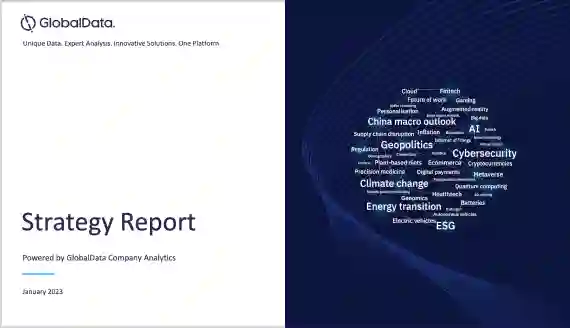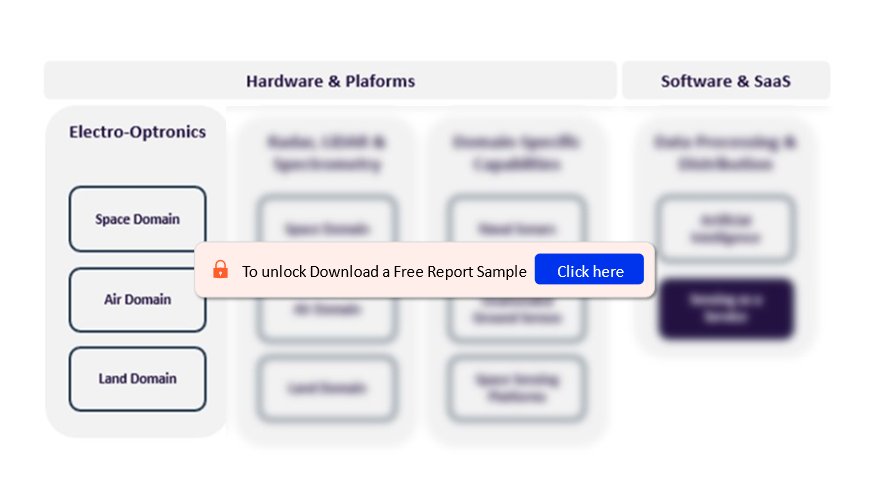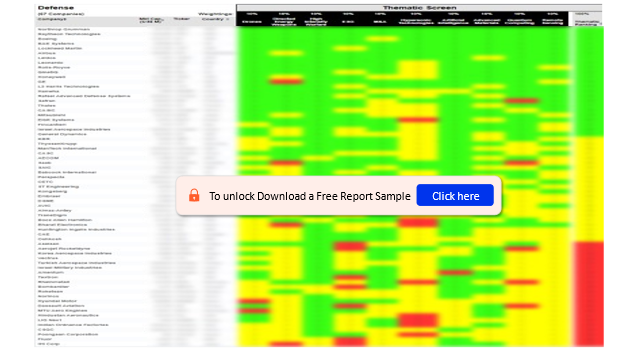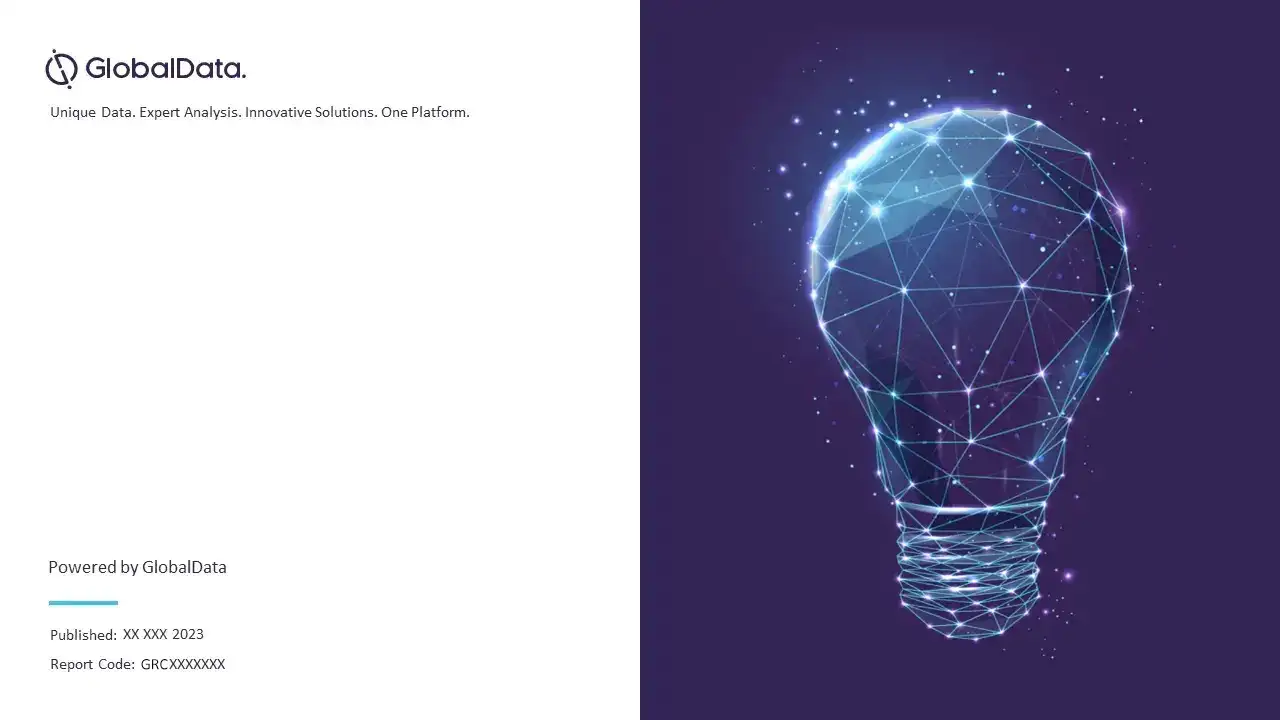Remote Sensing in Defense – Thematic Intelligence
Powered by ![]()
All the vital news, analysis, and commentary curated by our industry experts.
Remote Sensing in Defense Thematic Intelligence Report Overview
The concept of remote sensing (RmS) has been a staple of military C4ISR capabilities for decades, emerging capabilities in the civilian space market and mounting concerns over geopolitical competition between great powers are driving renewed growth and investment in this sector.
The emergence of the ‘sensing-as-a-service’ market is a testament to the innovation potential and growth of the commercial RmS firms. It is also indicates the global defense sector’s lack of comparative investment in spaceborne C4ISR technologies. Firms such as Blacks, ICEYE, Maxar Technologies, and Planet Labs have developed and fielded high-performance capabilities while relying primarily on revenue streams from civil sector government agencies and non-governmental organizations.
As the market for SaaS has expanded, a growing number of international RmS institutions such as the European Association for Remote Sensing Companies (EARSC have emerged to facilitate growth and expand cooperation between industry and government clients in specific markets.
The remote sensing in defense thematic intelligence report provides emerging technological trends and their broader impact on the defense market. Moreover, it offers an analysis of the defense-related remote sensing projects currently under development, as well as cross-industry research initiatives which could impact the future applications of this technology.
| Report Pages | 61 |
| Regions Covered | Global |
| Trends | Technology Trends, Macroeconomic Trends, and Regulatory Trends |
| Value Chains | Electro-Optronics, Radars, Lidar, and Spectrometry, Domain-Specific Capabilities, and Data Processing and Distribution |
| Leader Companies | Airbus, BAE Systems, Boeing, and Chang Guang Satellite Corporation |
| Leading Disruptor Companies | AiDash, Atlas Elektronik, Bertin Exensor, and Bharat Electronics |
Remote Sensing in Defense: Key Trends
The key trends that are associated with the Remote Sensing theme can be classified into three categories: technology trends, macroeconomic trends, and regulatory trends.
- Technology trends – Some of the key technology trends impacting the remote sensing theme include rising usage of artificial intelligence, advanced materials and nano-engineering, the emergence of light detection and ranging (LiDAR), and non-linear radar signal processing
- Macroeconomic trends – Some of the key macroeconomic trends that will shape the remote sensing theme in the defense sector are geopolitics and great power competition, rising procurement and defense R&D costs, and sensing as a service (SaaS).
- Regulatory trends – The key regulatory trends impacting the remote sensing theme include increased regulation of space systems and shutter control.
For more insights on key trends shaping the remote sensing theme in the defense sector, download a free report sample
Remote Sensing in Defense – Industry Analysis
The most dramatic market trends have taken hold within the last decade, specifically within the field of commercially available, space-based GEOINT/IMINT RmS capabilities. Since the US Department of Defense (DOD) first spearheaded the hybridization of military and commercial satellite imagery under the Enhanced View program in 2010, demand for commercial satellite imagery from across the military spectrum has increased dramatically.
The emerging trend saw a major spike in the lead-up to and following the outbreak of the war in Ukraine, with the US intelligence community incorporating commercial satellite imagery from firms such as Maxar Technologies in its public briefings on the build-up of Russian forces throughout the latter stages of 2021 and early 2022. Following the outbreak of the conflict, the use of commercial GOEINT/IMINT data to monitor the conflict and track troop movements expanded dramatically within both the military intelligence and open-source analytics community, with the widespread accessibility of high-resolution imagery and spectrometry data providing the public with unparalleled oversight of the conflict.
The Remote Sensing in defense industry analysis also covers:
- Mergers and Acquisitions
- Patent Trends
- Company Filing Trends
Remote Sensing in Defense - Value Chain Analysis
GlobalData’s Remote Sensing value chain consists of the following segments: electro-optronics, radars, lidar, and spectrometry, domain-specific capabilities, and data processing and distribution.
The electro-optronics segment of the value chain comprises the space domain, air domain, and land domain. The first major value chain in the RmS market revolves around electro-optical sensor systems, which due to their versatility and continued modernization provide sensing capabilities across various domains of operations. Within the domains of spaceborne RmS, the market is divided between established defense and space sector primes including L3Harris Technologies, Northrop Grumman, and Teledyne FLIR, while several smaller specialist firms such as Dragonfly Aerospace and SATLANTIS are gaining in popularity and recognition as the accessibility and utility of Earth Observation capabilities increases.
Remote Sensing Value Chain Analysis
For more insights into the Remote Sensing value chains, download a free report sample
Leader Defense Companies Associated with the Remote Sensing Theme
Some of the leading companies making their mark within the Remote Sensing theme are Airbus, BAE Systems, Boeing, and Chang Guang Satellite Corporation among others.
To know more about the leading companies associated with the remote sensing theme, download a free report sample
Disruptor Companies Associated with the Remote Sensing Theme
Some of the disruptors associated with the Remote Sensing theme are AiDash, Atlas Elektronik, Bertin Exensor, and Bharat Electronics among others.
To know more about the leading disruptors associated with the remote sensing theme, download a free report sample
Aerospace, Defense, and Security Sector Scorecard
At GlobalData, we use a scorecard approach to predict tomorrow’s leading companies within each sector. Our sector scorecards have three screens: a thematic screen, a valuation screen, and a risk screen. Remote Sensing in defense is a theme that, though currently limited in scope, has the potential to impact many of the industries and sectors we cover. In this report, we focus specifically on the aerospace and defense sectors.
- The thematic screen tells us who are the overall leaders in the 10 themes that matter most, based on our thematic engine.
- The valuation screen ranks our universe of companies within a sector based on selected valuation metrics.
- Our risk screen ranks companies within a sector based on overall investment risk.
Aerospace, Defense, and Security Sector Scorecard – Thematic Screen
To know more about the aerospace, defense, and security sector scorecard, download a free report sample
Scope
- The key defense challenges that defense sector suppliers face are covered.
- The investment opportunities for armed forces, suppliers, and institutional investors, across the whole Remote Sensing value chain are covered.
- Highlights from the range of different Remote Sensing research and development programs currently being undertaken by various military organizations and defense companies.
Key Highlights
• Studies of emerging technological trends and their broader impact on the defense market.
• Analysis of the various defense and security related remote sensing projects currently under development, as well cross-industry research initiatives which could impact the future applications of these technologies.
Reasons to Buy
- Determine potential investment companies based on trend analysis and market projections.
- Gaining an understanding of the market challenges and opportunities surrounding the Remote Sensing theme.
- Understanding how spending on Remote Sensing will fit into the overall market and which spending areas are being prioritized.
Chang Guang Satellite
Honeywell International
Lockheed Martin
QinetiQ
CASC
Northrop Grumman
Elbit Systems
Kongsberg
L3Harris
Leonardo
Maxar Technologies
Rafael ADS
Raytheon Technologies
Teledyne Technologies
Thales
AiDash
Boeing
Atlas Elektronik
Bertin Exensor
Bharat Electronics
BlackSky Technology
Planet Labs
Capella Space
CETC
Domo Tactical Comms
Dragonfly Aerospace
Earth-i
ELTA Systems
Excelitas Technologies
GeoSat
Hanwha Defense
Hensoldt Optronics
Iridian Spectral Technologies
Leica Geosystems
Pachama
Safran SA
Spire Global
Surrey Satellite Technologies
Terrabotics
Table of Contents
Frequently asked questions
-
What are the key components of the Remote Sensing value chain?
GlobalData’s Remote Sensing value chain consists of the following segments: electro-optronics, radars, lidar, and spectrometry, domain-specific capabilities, and data processing and distribution.
-
Which leading companies are making their mark within the Remote Sensing theme?
Some of the leading companies making their mark within the Remote Sensing theme are Airbus, BAE Systems, Boeing, and Chang Guang Satellite Corporation among others.
-
Which leading disruptor companies are associated with the Remote Sensing theme?
Some of the disruptors associated with the Remote Sensing theme are AiDash, Atlas Elektronik, Bertin Exensor, and Bharat Electronics among others.
Get in touch to find out about multi-purchase discounts
reportstore@globaldata.com
Tel +44 20 7947 2745
Every customer’s requirement is unique. With over 220,000 construction projects tracked, we can create a tailored dataset for you based on the types of projects you are looking for. Please get in touch with your specific requirements and we can send you a quote.
Related reports
View more Aerospace and Defense reports












